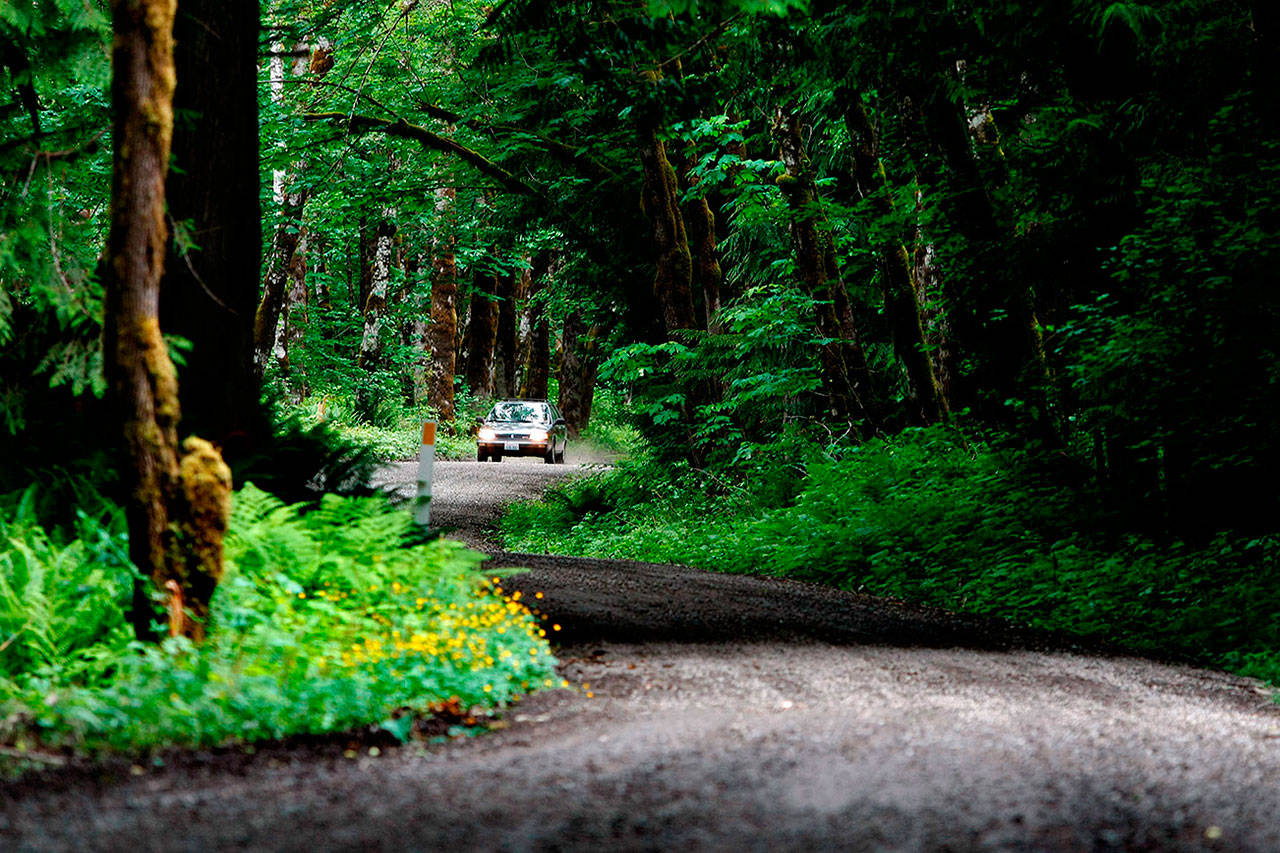By The Herald Editorial Board
The future of a 14-mile section of gravel road between Granite Falls and Darrington may be paved with good intentions, but whether it is eventually paved with asphalt is a question now open for discussion.
The gravel road is a section of the cherished 52-mile Mountain Loop Highway that provides access between the two Snohomish County cities to hiking, camping, fishing, Sunday driving and more within the Mount Baker-Snoqualmie National Forest and three wilderness areas: Boulder River, Glacier Peak and Henry M. Jackson. Among its most popular attractions are Big Four Mountain and its ice caves.
Much of the “loop” — actually only a section of the larger loop that includes Highways 530, 92 and 9 — is paved, two-lane road, but about 14 miles between Barlow Pass and and White Chuck River is a single-lane gravel road.
Residents and town officials in both Granite Falls and Darrington want to see the gravel section paved, and a $500,000 study, funded by the National Highway Administration and with participation from the U.S. Forest Service, Snohomish County and the two cities, was recently completed. The feasibility study had its first public open house Wednesday in Granite Falls and gets a second at 6 tonight in Darrington at the Darrington Community Center.
Proponents of paving point to the road’s safety needs, the growth in recreational use in the area and the need for an additional emergency route when access on other roads is blocked. Opponents have cited concerns for impacts on the environment and wildlife.
Any work on the road is still years off and would have to complete design work, an environmental review and win funding for construction.
Funding, which would come from federal, state and county sources, may be the biggest roadblock to any improvement project. The study looked at four options, including one that would widen, realign and pave the 14-mile gravel section to a 40-mph standard. Cost estimates put the work at between $56 million and $70 million. On the other end, leaving the road in its current condition would require annual maintenance costs of about $112,000.
Two other options, however, deserve a closer look by those involved.
One of the mid-price options would make minor road and drainage improvements. Its estimated cost is between $6.4 million to $14 million. The other would bring the gravel section up to a 25-mph standard with widening and road realignment to improve sight lines for curves and hills, along with drainage improvements. That option, keeping the section gravel, is estimated to cost between $12.6 million and $26.6 million.
Even if not paved, widening the road to a minimum of 18 feet and a maximum of 32 feet and realigning some sections could deliver some of the same goals for safety, access and environmental protection. Currently, the study finds, only 41 percent of the curves on the gravel section meet a 40-mph design standard, while 31 percent of the hills meet the same mark.
Realignment and widening also offer the opportunity to improve culvert design to limit impacts on the forest’s salmon streams.
Following the consideration of comments, Snohomish County and the U.S. Forest Service — who will make the final decision — should find a middle road that for a reasonable cost achieves the goals for safety, encouragement of recreation and limited environmental impacts.
One final point on an advantage of gravel roads: They do tend to encourage a slower speed; not a bad thing on a Sunday drive through the forest.
Talk to us
> Give us your news tips.
> Send us a letter to the editor.
> More Herald contact information.

























